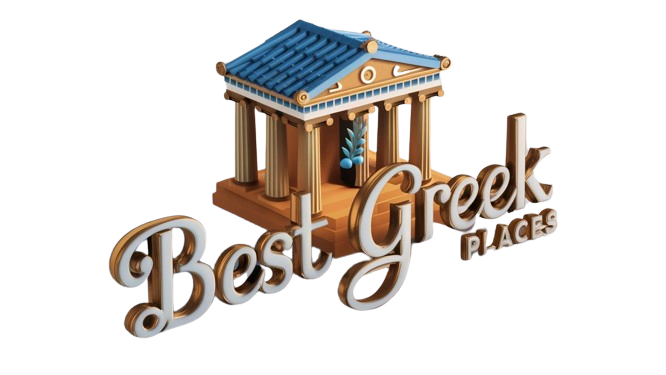Unveiling the Ancient Greek Bronze Helmet: A Korean Treasure
The world of archaeology often surprises us with fascinating historical artifacts that reveal much about past civilizations. One such item that has recently captured the attention of historians and enthusiasts alike is an ancient Greek bronze helmet, which has been recognized as a significant Korean treasure. This remarkable artifact not only boasts an impressive history but also serves as a testament to the rich cultural exchanges between Greece and Korea.
A Glimpse into History
The discovery of the ancient Greek bronze helmet sheds light on a period long past, where warriors adorned themselves with such pieces to signify strength and valor. This helmet is not merely a piece of armor; it encapsulates stories of battles fought and won, reflecting the artistic and metallurgical skills of ancient craftsmen. Its intricate designs provide a window into the cultural values and practices of its time.
Sohn Kee-Chung: A Marathon Legend
Transitioning from the helm of ancient warriors to the track of modern heroes, let’s glance at Sohn Kee-Chung. He achieved remarkable fame as the winner of the marathon at the 1936 Berlin Olympics. This event, forever etched in the annals of sports history, was not just about athletic prowess but also a poignant moment of cultural significance for Korea.
Celebrating a Historic Victory
When Sohn Kee-Chung crossed the finish line, he did more than secure a gold medal; he represented a nation yearning for recognition. Competing during a tumultuous time, his victory resonated as a symbol of hope and resilience for the Korean people, who at that time, were experiencing political oppression and cultural erasure.
Honoring Tradition with Authentic Awards
A cherished tradition accompanied the celebration of athletic achievements in ancient Greece: the awarding of genuine, historically significant prizes to victors. In Sohn’s case, his win at the Olympics came with the promise of honoring this legacy. These prizes served not only as tokens of attainment but as pieces of history that connected modern winners to their ancient predecessors.
The Connection Between Cultures
The convergence of the ancient Greek bronze helmet and Sohn Kee-Chung’s Olympic triumph underscores an extraordinary link between diverse cultures. The helmet, an emblem of ancient warfare, symbolizes values of honor and bravery that transcend time and geography. It illustrates how historical artifacts can serve as cultural bridges linking the modern world to its roots.
The Significance of the Helmet
Archaeologists and historians value the ancient Greek bronze helmet for its artistic merits as well as its historical significance. Its discovery adds depth to our understanding of helmet design and construction during ancient times, showcasing the Greeks’ dedication to craftsmanship in both war and artistry.
A Relic of Resilience
Much like the story behind Sohn Kee-Chung, the ancient helmet embodies resilience. For centuries, it has survived the ravages of time, and now it stands as a powerful reminder of human endurance. The helmet illustrates the courage of those who wore it and offers contemporary society a lesson on the importance of perseverance in the face of adversity.
A Cultural Legacy Reimagined
The ancient Greek bronze helmet’s recognition as a Korean treasure is a reimagining of cultural heritage. By acknowledging its significance, we celebrate the interconnectedness of human history and can appreciate the beautiful tapestry that comprises our global narrative.
Lessons from the Past
Artifacts like the ancient helmet and figures like Sohn Kee-Chung convey profound lessons about identity, heritage, and triumph. They remind us that our past experiences shape our present, encouraging us to honor traditions while looking forward to the future.
Bridging Past and Present
Both the ancient Greek bronze helmet and Sohn Kee-Chung’s victory represent enduring symbols that bridge the past to the present. When we reflect on their stories and significance, we foster a deeper understanding of the legacies we inherit and the values we carry forward.
An Invitation for Exploration
Historians and archaeologies invite us to explore more treasures like the ancient Greek bronze helmet, encouraging curiosity about our shared cultural histories. With every artifact, we have the chance to rewrite the narratives and revitalize the stories that forge our identities.
Cultural Relics in the Modern World
In today’s increasingly globalized society, the ancient Greek bronze helmet serves as a reminder of the rich tapestry of cultural relics that exist across the globe. These artifacts are not simply remnants of the past; they are living histories, propelling us toward a more profound understanding of humanity.
The Role of Artifacts in Modern Identity
As we delve into the significance of artifacts like the ancient helmet, we begin to comprehend their role in shaping modern identity. Culture is not stagnant; it evolves, often in dialogue with the past. Each discovery can inform contemporary perspectives and provide insights into our shared human experience.
A Lasting Legacy
As we conclude our exploration of the ancient Greek bronze helmet and the legacy of Sohn Kee-Chung, it’s evident that cultural artifacts carry powerful stories. They remind us that treasures are not defined solely by their material worth but by the powerful narratives and lessons they embody, urging us to appreciate and safeguard our rich heritage.





















